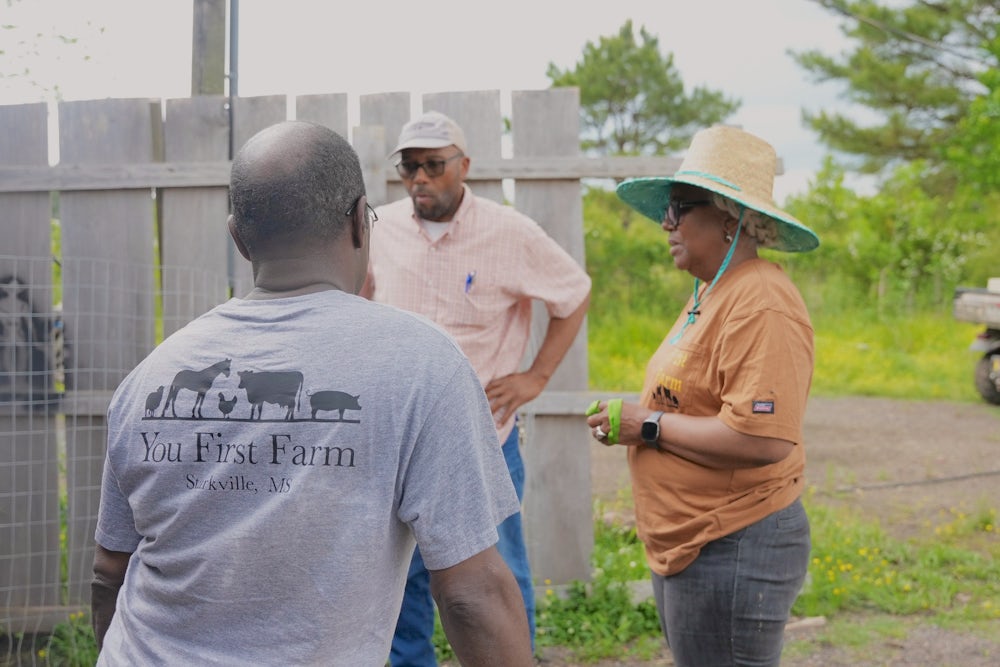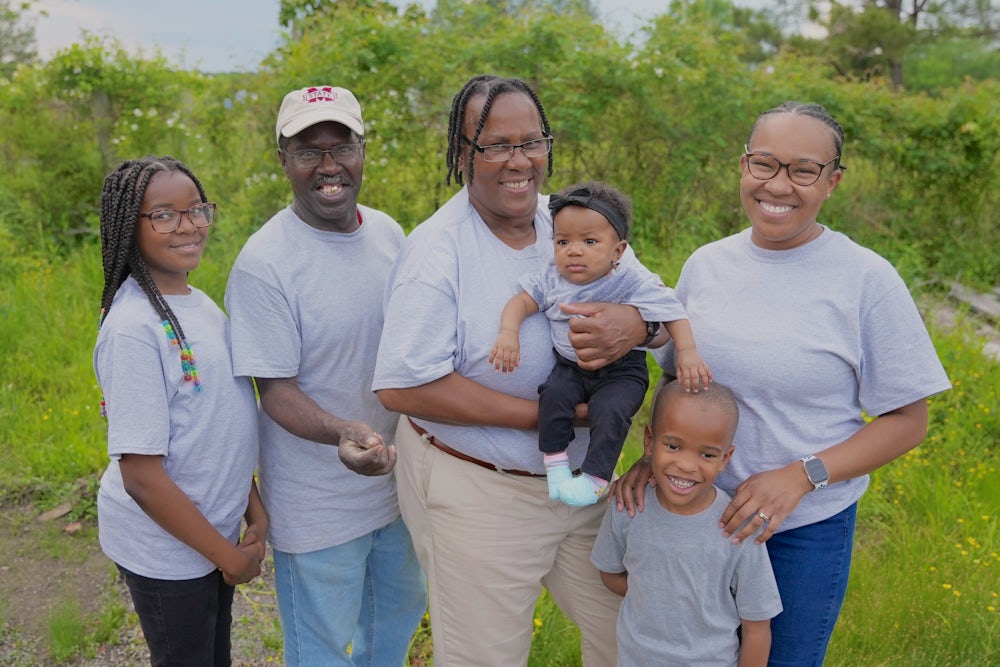Look closely at the trees dotting Curtis Snell’s farm in Starkville, Mississippi, and you’ll find a drove of pigs happily foraging under the canopy.
Raising pastured pork — a regenerative method in which pigs are raised full time on wooded pastures — is new for Curtis. But having a vision for his farm is not.
“I looked at this farm in 1976 and said that hopefully one day I would buy it,” Curtis said. And 30 years later, he did.
Now, with support from Heifer USA, Curtis is establishing himself as a premiere pastured pork producer in Mississippi — and transforming his land into a lasting legacy.
Building an operational farm — with a market to support it — isn’t without its challenges though, especially in Starkville.
“At one point, Mississippi was a very large source of pork production, but several economic downturns, and several pork processing plants in the area went away,” explained Ruth Canada-Painter, Heifer USA’s engagement and outreach program officer, whose job focuses on recruiting new farmers to add to the Heifer USA network.
This economic and infrastructure loss turned Starkville from a thriving agricultural town into a tough place to build a profitable career in farming. “Many farmers … had land that was just sitting there. Nothing was being done with the land,” Ruth said.
“Mississippi as a project was selected because of the need in the community to support and empower diverse farmers who often lack access to the major food systems,” she added.

With a desire to farm and enough land to raise pastured pork, Curtis seemed like the perfect partner in this effort. And though he was initially worried about infrastructure and animal management in the regenerative model we proposed, Curtis decided to take a chance on us, too.
Over the course of five months, teams from Heifer USA made multiple trips to Mississippi to help Curtis design and construct his new farm. With additional help from family and friends, he built a receiving barn, where new piglets spend their first few days in a more sheltered environment before moving out to pasture. He also divided his land into 12 fenced paddocks for rotational grazing, which would offer his pigs space to roam and root for nutritious nuts, insects and grasses while giving the remaining pasture time to regenerate.
Together, Heifer USA and Curtis sourced and installed feeders and waterers, ensuring he knew how to utilize each piece of equipment on his new pig farm. And finally, Curtis received his first batch of piglets.
“They came in to assist me. Physically, on the ground, helping me get things done,” he said. “Things that I had no idea how to do. I knew it had to be done, but I didn't know how to get it done.”

For many farmers like Curtis, finding consistent, profitable market opportunities is another obstacle standing in the way of success. But Heifer USA also connected Curtis to Grass Roots Farmers’ Cooperative, a co-op of regenerative farmers with an e-commerce site serving customers across the U.S.
“Grass Roots has each farmer sign a grower's agreement, so the farmer knows at the very beginning of the process how much they're going to get for the product that they're raising,” said Ruth. “And I think that really takes a lot of the stress away from the farmer, because then they can focus fully on raising healthy animals.”
With this combined technical support and market access from the Heifer USA and Grass Roots network, Curtis knows he’s not working alone.
“I just need to make sure I produce the product. And anything I need, they will assist me in any way they can,” he said. “It's a win-win situation in my opinion.”
After successfully rearing and selling his first batch of pigs, Curtis is now focused on expansion, aiming to increase the number of animals he raises each year and helping Heifer USA find more farmers in the area interested in pastured pork production.
“What he has done is to invite people throughout the week into his farm to see how he's doing this,” Ruth said. “When other people are interested, we bring in tours, so they can see how Curtis got started from just a bare landscape to a really high-level pork producer.”
Building a community of pastured pork producers in the Starkville region will allow for more resource and knowledge sharing among farmers, in addition to enabling individual producers to share the cost of operational expenses, like transportation or shipping of feed.

“If I knew someone that was interested in raising pigs the way that we are doing it, I would encourage them to do it,” Curtis said. “And I would also let them know, ‘Here is my card. Call me at any time.’ I would be more than happy and willing to share my experience with them. I would be there because if they are successful, I'm successful.”
This success is especially important to Curtis, who sees his farm as an investment in the future of his family.
“I'm at the age now that I need to start leaving something for the children and grandchildren. That's real important to me,” he said. “My family owns this farm. That makes me feel good because I have a family business that I can leave down to them. And I told them when we started: I didn't start this business for two or three years. I started it to have a lifetime legacy for them to go on.”